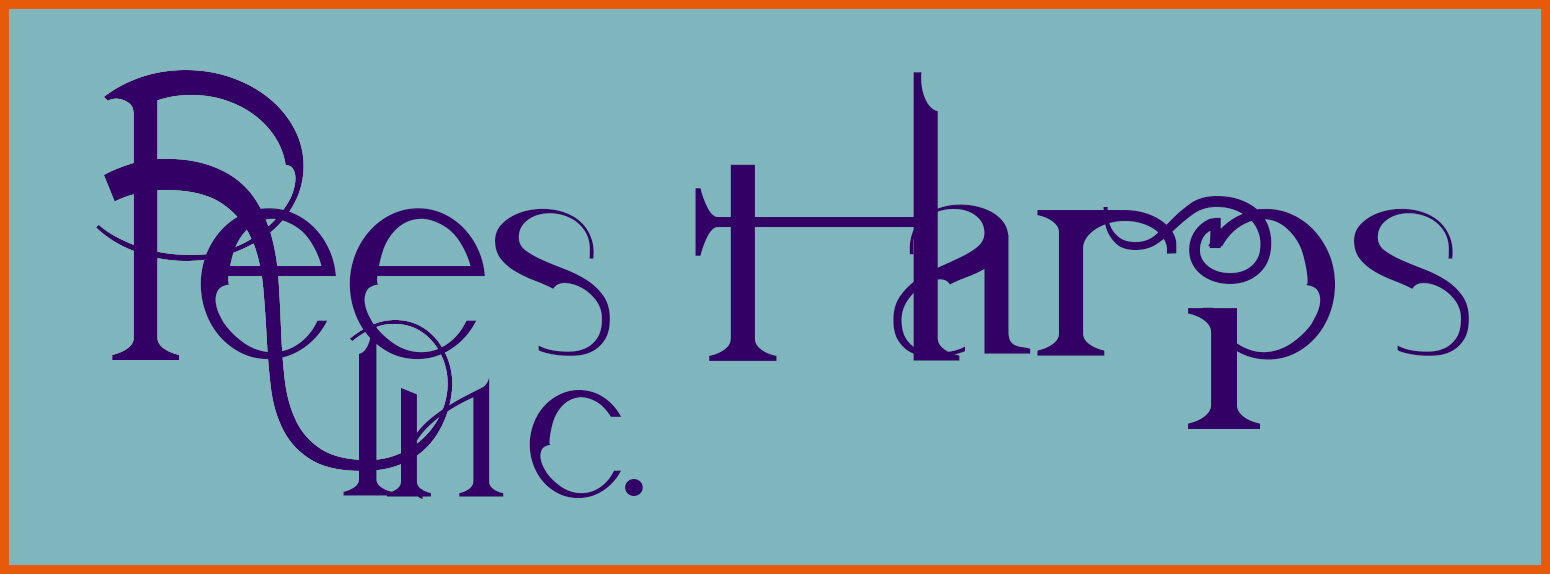Slipping Tuning Pins
Tapered harp pins can slip and, very occasionally, piano-style (zither) pins can as well. This happens for a variety of reasons. For a tapered pin it can occur just after the harp has been in the car and has been vibrating due to the road. For either kind of pin it can just happen, randomly, from use. Ninety-nine percent of these issues are an easy fix and one any harper can manage in just a few minutes.
Lay your harp, string side down, with the point on a book and then firmly press the loose pin back in with your tuning wrench.
Tapered Harp Tuning Pins
All you will need to fix virtually all slipping is your tuning wrench. Put your wrench on the problem pin and wiggle-press the pin back into the arch just like you are pushing in a cork. If this is difficult for you, place your harp on its side with the strings down and away from you. Put the wrench on the pin and twist/push in as hard as you reasonably can. You will see the pin move deeper into the harp neck an eighth to a quarter of an inch. If the pin becomes too tight, just wiggle it back out a little bit. This should be enough to re–seat the taper of the pin so that it will grab.
If you do have a case of ware and the pin is disappearing too low into the harp neck, take the pin completely out and thinly coat the inside of the hole with wood glue applied with a toothpick. Should any glue end up on the surface of your harp and outside of the hole, just wipe it off with a damp rag. Allow the glue to dry overnight. Replace the harp pin by twist/pushing it in as described above. This will extend the life of a worn hole. If you have a case of extreme ware, any fine classical luthier can plug the old hole and use an appropriate wood to create a completely new hole with minimal cosmetic change to the look of your harp.
Be sure to spread the glue around the sides of the hole with a toothpick. Just putting glue in and letting it settle to the bottom of the hole will not work well.
Piano-style (Zither) Pins
If you have a hole which has become really worn, remove string and then use your tuning wrench to remove the pin completely. Take wood glue (the yellow kind) and a toothpick and use the toothpick to put glue all around the inside walls of the hole in a thin layer. The glue will fill in the grooves created by the threads and will give the pin new material to grab when the pin is reset. Once the hole is lined, allow the glue to cure overnight even though it appears quite hard. The next day reset your pin and restring.

